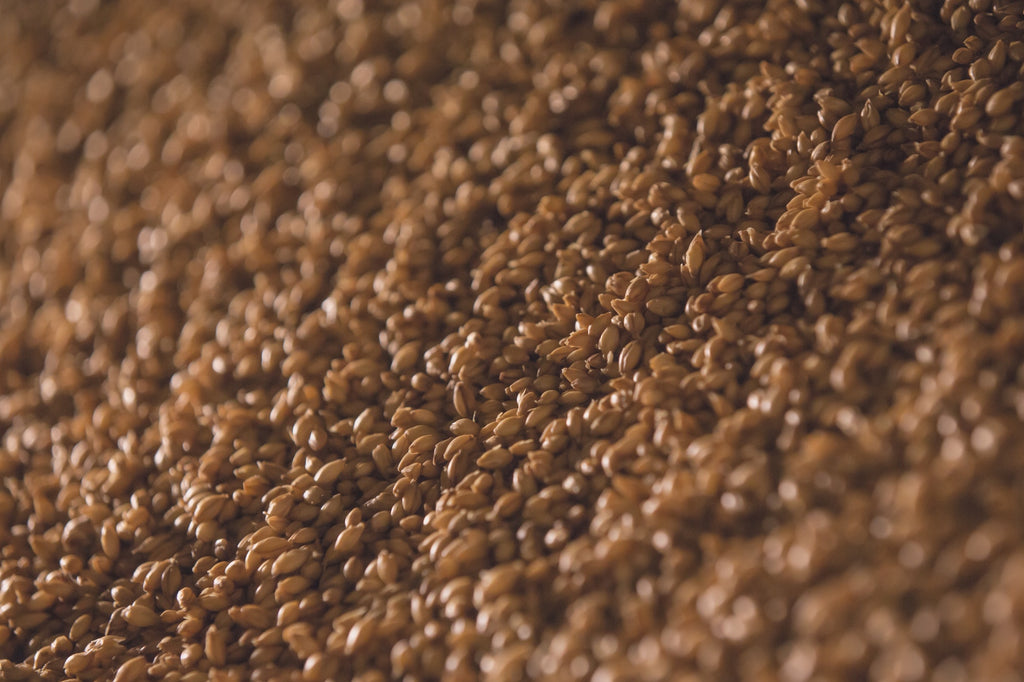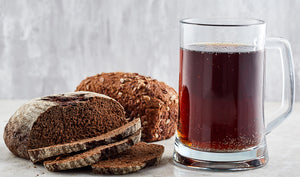Grain is the lifeblood of beer and plays a major part in the flavour, aroma, and taste of each individual brew.
While water makes up 90% of beer, grains are the most important ingredient in beer as they give us the fermentable sugars that are required for brewing beer.
Beer grains fall into two major categories: Malts & Adjuncts.
Malt
The process of malting grains is essential to brewing and distilling. Malt is the result of germinating grains in water, then halting the germination by drying the grain with hot air. Malting develops the enzymes that are necessary for modifying the grain's starches into sugars.
Malted Barley
Base Malt
Base malts are the largest portion of the grain bill in a beer (usually 75-90%). The exception for this are wheat beers where wheat makes 100% of the grain bill.
The most common malts in this group are Pilsner, Vienna, Munich, Pale Ale, and Pale.
- Pilsner: Used to brew traditional Czech & German Pilsners.
- Vienna: Used in Vienna lagers; has a high malty flavour profile.
- Munich: Used to brew Oktoberfest and many German beer lagers.
- Pale Ale: Used mainly in traditional British Ales.
- Pale: Often referred to as "2-Row" and the most common of base malts (used as a base malt in about 95% of beers).
Crystal & Caramel Malt
Caramel malt is often used interchangeably with crystal malt in the malt industry. However there are distinct differences between the two:
- Crystal malt is hard, and generally made from barley.
- Roasted at a lower temperature than caramel malt, crystal malt has a slight sweetness to it. Caramel malts are harder, usually made from rye or wheat and carry a nutty flavour profile.
- During the roasting process, caramel malt sugars are caramelized into long chains that convert to simple sugars during the mashing process.
Crystal and caramel malts are broken down by their position on the Lovibond scale:
- Light - 10 L
- Pale - 40 L
- Medium - 60 L
- Dark - 120 L
2-Row vs 6-Row
2-row barley is common in European brewing, however 6-row was the most common barley used by early American brewers because of its availability. It wasn't until the mid-late 1900's that American brewers began using 2-row barley more often.
The first and most obvious difference between 2-row and 6-row barley is the physical appearance of the barley stalk. 2-row barley has 2 rows of kernels, 6-row varieties have 6 rows of kernels.
Beyond the physical differences, brewers choose to use 2-row or 6-row based on the protein and enzyme levels in each. 6-row barley has higher levels of protein and enzyme, but lower levels of carbohydrate. 6-row also produces a grainer flavour, and 2-row is often described as producing a fuller and maltier flavour.
Whole vs Crushed
For convenience many homebrewers buy their grains crushed to save the cost of a grain mill (and the mess it can create). Buying your grains this was is a good idea if you're brewing with them shortly after they are crushed. However, if you're holding on to your grains for a while, buying them whole and storing them in an airtight container will give you the longest grain life. If you have leftover crushed malt, store it in an airtight container in a cool, dry place.
Adjuncts
Rice
Non-aromatic forms of rice are used as adjuncts in brewing. While whole rice kernels are sold to consumers, brewers use the broken kernels. Rice has the highest starch content of all cereal grains and has a high gelatinization profile, therefore it must be boiled before being used in brewing. Budweiser famously uses rice as an adjunct and adds a dry & clean taste to beers.
Corn
Corn is a very popular adjunct in American lagers and malt liquors. Corn is commonly used in the form of flakes, grits (meal) or starch in brewing. Corn adds a mild sweetness and grainy taste.
Unmalted Barley
Unmatled barley is common around the world and contributes to the head in a beer. When used in proper amounts, this adjunct adds a grainy flavour, but too much can add a harsh taste to your finished beer. Roasted barley adds a taste similar to roasted coffee beans and is often used in dry stouts or porters.
Unmalted Wheat
Unmalted wheat is generally used in Witbiers and other brews that are cloudy. Because of its high protein, unmalted wheat can produce a chill haze and provides a malty spiciness to beer. It is generally used flaked or torrified.
Rye
Highly absorbent, Rye gives brews a fruity and spicy flavour and an orange colour. Rye is available whole, flaked or torrified.




